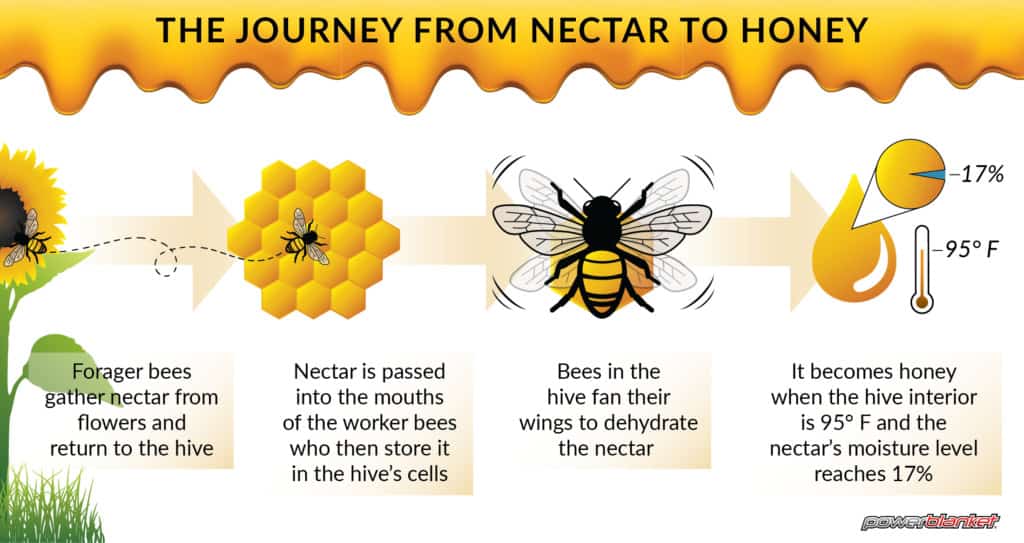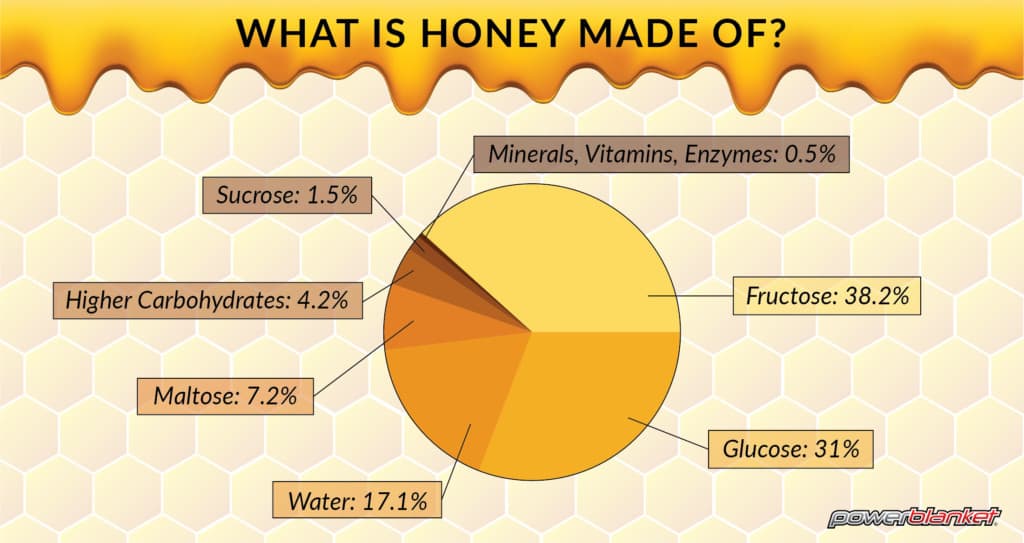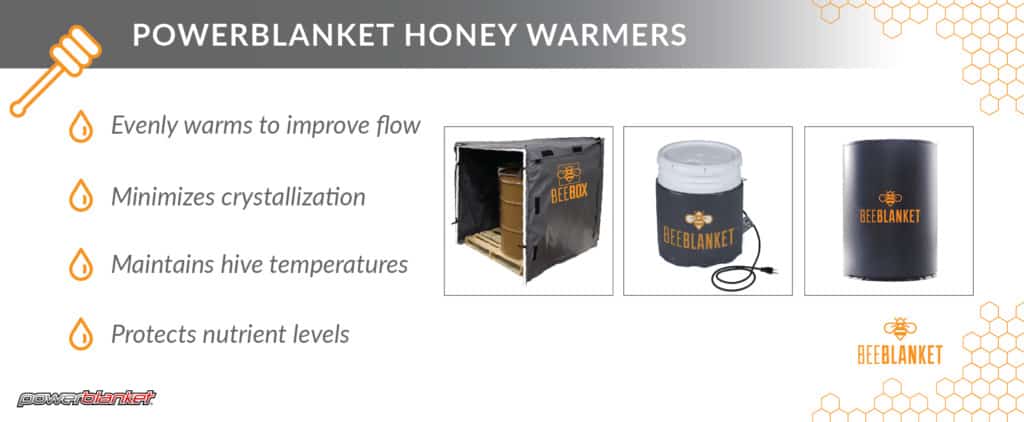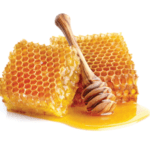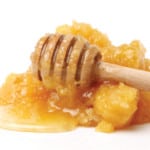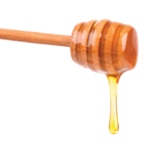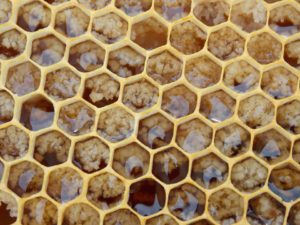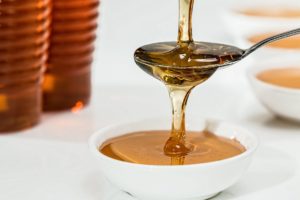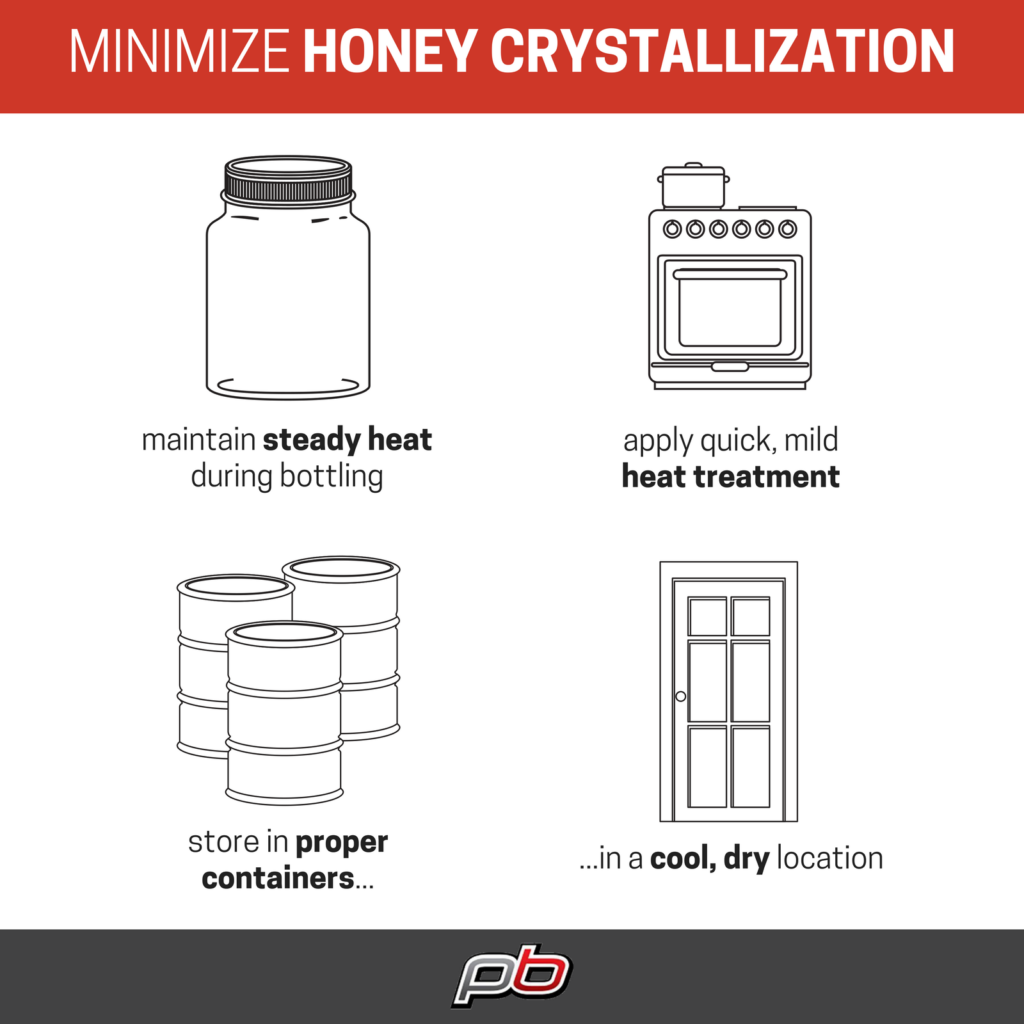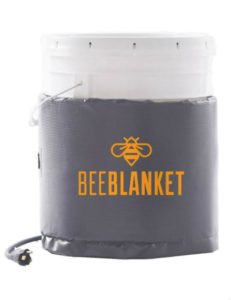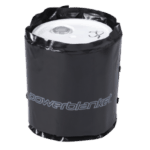Careful heat application is the most important element in decrystallizing honey. Those who work with honey will tell you that liquefying honey only requires specific amounts of gentle heat. This prevents you from destroying the elements that make honey delicious and nutritious. How can you be sure your decrystallizing method isn’t damaging your honey? First let’s take a closer look at the honey itself…
The Honey Basics
Made With Wind Power
Honey is created naturally by bees through nectar gathered from flowers. Even at these beginning stages, temperatures must be kept just right to create honey. According to honey manufacturer and beekeeper expert Paul Allison, proper ventilation is the key to honey making:
“During periods of excessive heat or an abundance of nectar, the bees beat their wings to renew the hive’s atmosphere. The foragers pass on the nectar gathered from the flowers into the mouths of other worker bees, who then store it in the hive’s cells. This nectar is dehydrated by the movement of the air produced by the fanning bees wings. It becomes honey when the moisture content reaches 17%. Beehives need to be kept at 95° F to be the right temperature to produce honey.”
What Is Honey Made Of?
Raw honey is a mixture of natural sugars, other carbohydrates, water, minerals, vitamins, and enzymes. Because these elements never “go bad”, honey is truly the only food that doesn’t spoil. It does however settle, harden, and become cloudy as it sits over time. This process is known as crystallization, and you have probably witnessed it yourself when you have found an old honey jar in the back of your cupboard.
Why is Crystallization a Problem?
Nutritionally, there is nothing wrong with crystallized honey. However it can be very difficult to remove from its container and work with. Most consumers will avoid purchasing a crystallized honey jar if they can, which is why honey manufacturers go the extra mile to make sure their honey is soft, and usable.
Decrystallizing Honey
Whether stored in a glass honey jar, plastic bear, or in bulk containers, caution must be taken in warming the honey contents to prevent damage. Idaho beekeeper Ward Hicks says his business, Hicks Honey, understands the importance of temperature control:
“I believe pure honey should be treated with extreme care. Some people refer to it as, ‘the essence of vanished flowers.’ Improper heat treatments can damage the delicate flavors and destroy the yeasts and enzymes that make honey so special.”
Idaho honey is often sourced from flowers belonging to the clover family. As a result, it has a distinct flavor that can be lost if heated too quickly. Hicks says slow warmth is the best way to process honey via decrystallization:
“Anytime honey is decrystallized, it should be warmed slowly and very gently. I have learned that a slow warming process, not to exceed 120 degrees Fahrenheit, is best.”
Once warmed, honey can be poured smoothly and beekeepers can rest easy knowing that the nutrients unique to honey remain unharmed.
At Home Honey Tips
The safest way to decrystallize a honey jar at home is to simply give it a warm bath. Place your jar in a bowl with warm water and let it sit until it decrystallizes. Never use a microwave to soften your honey! Microwaves are notorious for uneven heating and you have little control over how hot your honey will get. Protect your honey from scorching and caramelizing by resisting the temptation for a quick solution and skip the microwave altogether.
Avoid storing honey in a cupboard or pantry that gets really cold during the winter. Colder temperatures will accelerate honey crystallization. Keeping your honey at normal room temperatures will help keep it soft and usable for a longer period of time.
Bee-ware of Overheating
Gentle heating restores honey to its smooth, clear glory. However, overheating makes honey so runny it is the consistency of water. Applying high, uneven heat will also reduce the nutritional value of your honey by killing off enzymes and antioxidants. In addition, overheating can caramelize the sugars and greatly degrade the quality of your honey.
Powerblanket Honey Solutions
Bee Blanket Honey Warmers
Here at Powerblanket, we specialize in total temperature control. That’s why we developed the Bee Blanket. Our honey warmers are specifically calibrated for honey’s nutritional and thermal needs. We can give you complete control over the decrystallization process, solve your viscosity problems, and protect your liquid gold. Contact us today to find the perfect solution for all your honey needs at 855-820-3767 or [email protected]
Frequently Asked Questions
What is the easiest way to decrystallize honey?
The easiest way to decrystallize honey is to place the jar in a bowl of warm water, ensuring the water temperature does not exceed 120 degrees Fahrenheit, and let it sit until the honey returns to its liquid state.
How many times can you decrystallize honey?
It's best to decrystallize only the amount of honey you need at one time, as repeated heating and cooling can diminish its flavor and aroma.
Is it okay to microwave crystallized honey?
While microwaving honey can quickly smooth it, this method risks uneven heating and can damage the honey's delicate flavors and nutrients, so it's better to avoid using a microwave.
Can you reverse crystallized honey?
Yes, you can reverse crystallized honey by gently warming it in a bowl of warm water until it becomes smooth and liquid again.
The Powerblanket Bee Blanket will maintain the same temperature as a hive, ensuring your honey is always at the perfect temperature.


